- Administrator
- Albums and Singles
Check out the Podcasts that are being brought to you by Brainwashed.com:
| Brainwashed Radio: Podcast Edition brainwashed.com/podcast/podcast_rss.xml |
Music from the artists and labels hosted at Brainwashed. (One new hour every week.) |
| The Brainwashed Video Podcast brainwashed.com/podcast/video.xml |
Videos from the artists and labels hosted at Brainwashed. (Each "episode" is a separate music video.) |
All Podcasts are free. Video Podcasts are only viewable with iTunes.
Comments and requests and photos are encouraged to be sent to podcast at brainwashed dot com.
Like what you hear and wanna know more?
Search Brainwashed!
Brainwashed.com is an archival, educational, promotional non-profit service. The material included on Brainwashed radio is being used permissably thanks to the copyright owners of the original sound recordings and is broadcasting at a frequency comparible to a poor FM radio signal without the fidelity necessary to make phonographic duplicates.
The broadcast is not a commercial subscription service. Nobody charges money to listeners nor makes money from advertisers.
To find out more about United States copyright laws, visit www.loc.gov/copyright/. US residents are encouraged to voice their opinions to their congressmen about fair usage in non-commercial, non-subscription broadcasting.
Thank you for your support.
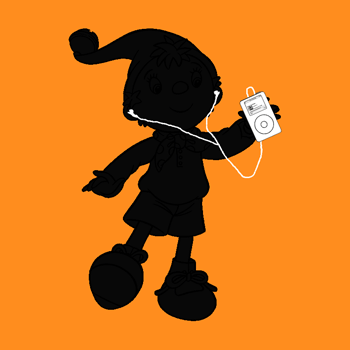
(Brainwashed Nodcast image by Nate Ritter.)
- Administrator
- Albums and Singles
- 666dB and Noise/Girl
- Andreas Martin
- Antony and the Johnsons
- Little Annie Anxiety Bandez
- Aranos
- Jessica Bailiff
- Bedhead
- Bomb the Bass
- Bowery Electric
- Cabaret Voltaire (and solo projects)
- Cex
- Andrew Chalk
- Charles Atlas
- Coil, Black Light District, ELpH, The Eskaton
- Current 93, David Tibet
- Cyclobe
- The Dead Texan
- Death In June
- Fridge
- Diamanda Galás
- Giorno Poetry Systems
- godspeed you black emperor!, A Silver Mt. Zion, Fly Pan Am, Molasses, Shalabi Effect, Frankie Sparo, 1-Speed Bike, Exhaust
- Greater Than One, GTO, Technohead, Church of Extacy, John + Julie, Signs of Chaos, S.O.L.O., Tricky Disco
- Christoph Heemann
- HNAS
- Ryoji Ikeda
- Edward Ka-Spel
- Labradford, Pan American, Aix Em Klemm
- The Legendary Pink Dots
- Matmos
- Brian McBride
- Meat Beat Manifesto, Perennial Divide, Jack Dangers
- Mimir
- Mirror
- Gordon Mumma
- The New Year
- Ora
- Organum
- Out Hud
- Nurse With Wound, Steven Stapleton, Chrystal Belle Schrodd, The Inflatable Sideshow
- The One Ensemble of Daniel Padden
- The Silverman
- The Soft Pink Truth
- Stars of the Lid
- Sybarite
- The Tear Garden
- Thighpaulsandra
- Throbbing Gristle
- Tortoise
- Trans Am
- Volcano the Bear
- V/Vm, The Caretaker, The Stranger
- Windy & Carl, 5 Way Mirror
- Wire Sound Archive
- Lucas Schleicher
- Albums and Singles
 Style and substance are constantly being removed from each other asmore and more releases like this one find their way to CD players. Asense of urgency can do a lot for a record or song, especially when thelyrics suggest something urgent; it's hard to believe Wolf Parade aredoing anything other than acting, however.
Style and substance are constantly being removed from each other asmore and more releases like this one find their way to CD players. Asense of urgency can do a lot for a record or song, especially when thelyrics suggest something urgent; it's hard to believe Wolf Parade aredoing anything other than acting, however.Sub Pop
It's the same problem I havewith another Montreal band of some acclaim. The vocals, the thumpinghalf-disco driven rock, the exaggerated interludes, and the attempts atfeeling epic all lend to some image of a kid standing on a soap box,but not really knowing what to say. It's the perfect music for ageneration spoiled by the easy, and oversimplified, knowledge providedby being part of the Internet community. No matter how important orinformed a song might make itself sound, there's no getting past thecomplete lack of musical innovation and no hiding from the operaticsingers that try to propel themselves into my mind instead of lettingme settle comfortably into their deliveries. It's the assholes aretrying to stab my ears, stick a funnel down them, and scream theirhorridly pedestrian and adolescent poetry into my brain. The musicitself is more of what is becoming the same: 1980s throwback is all therage and every record is incomplete without dance-intended beats,catchy melodies made by guitars and keyboards,and absolutely redundant verse/chorus/verse structures. And indeed, asrock moves backwards more than forwards, the guitar solo is still beingreplaced by non-existent or uninteresting breakdowns and sudden stops.The punk ethos is beautiful, but it's time to re-apply it to somethingother than guitars and drums. If comfort is the only concern somemusicians have for their fans (and themselves) then so be it, boringmusic has and probably always will exist as long as there's a dollar tobe made and an audience willing to snatch up every last album that hasan adjective like "inventive" or "innovative" attached to it.
samples:
Read More
- Administrator
- Albums and Singles
When Blackpool, England post-punks Tunnelvision broke up in late
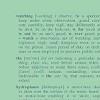 1981,they left behind a legacy of one single with renowned Factory Records,17 live shows, and the embarrassment of being labeled "spineless heavymetal" by the New Musical Express. Apparently, this was good enough toconvince LTM to release Tunnelvision's complete works to an indifferentpublic.
1981,they left behind a legacy of one single with renowned Factory Records,17 live shows, and the embarrassment of being labeled "spineless heavymetal" by the New Musical Express. Apparently, this was good enough toconvince LTM to release Tunnelvision's complete works to an indifferentpublic.LTM
Watching the Hydroplanes, though a well-intentioned affair, isan ultimately unrewarding one. This is hardly the fault ofTunnelvision, who existed all too briefly to further the rough ideasonly hinted at on this release. Watching shows a young band,clearly captivated by the sound and concept of pioneers Joy Division,who try to build on that firm foundation. "Watching the Hydroplanes"b/w "Morbid Fear," released by Factory in June of 1981 and produced byresident nut-job Martin Hannett, carries all the hallmarks of theirheroes. Upfront, darkly melodic bass work, echo-laden guitar, sinisterlyrics—all of this make Tunnelvision's first single a study inobservation and mimicry. But the fact is that Joy Division covered thischilly terrain before, and with much more conviction. While only thesetwo songs saw release at the time, the band had written at least 12more songs, eight of which (including the "Hydroplane" single) wererecorded at various sessions. The best of these are a set of songsmixed by New Order bassist Peter Hook. "The Man Who Would Be King" isperhaps Tunnelvision's harshest song, with driving drums and a bassline clearly inspired by Hook's former band. "100 Men" pulls awayslightly from the Joy Division legacy, with its crisp drumming andacoustic guitar, and sounds not unlike a less scary Death in June. Avibraphone reverberates throughout the tense "Guessing the Way," makingit perhaps Tunnelvision's strongest track, and offers a glimpse of themid-tempo tension builders the band may have pursued had they notbroken up so soon. But the fact is that Tunnelvision didn't givethemselves a chance to progress, and as a result the record is paddedwith just about every tape deck recording of the same eight songs.
 Perhaps as a way of proving to people that Tunnelvision were in fact a real band, LTM have also released Guessing the Way,which documents two live Tunnelvision performances dating from 1981 and1980. While I was let down in my hope that many of the songs found on Watching the Hydroplaneswould take off in a live setting, what were pleasantly surprising werethe tracks that were never recorded. "The Blue" and "Emotionless," fromtheir set at Bristol Trinity Hall in 1981, bounce along with tambourineshakes, tom-tom beats and stabs of distorted guitar. Though they aren'tearth-shattering, they are solid, driving, rock songs. "Hollow Men" isanother song that benefits from the live setting. Its walking bass linepulls the song along, punctuated by more raw blasts of distortion.Ultimately though, the whole concept of releasing two CDs worth ofmaterial from a band who previously had one seven inch to their namestrikes me as a bit excessive and utterly pointless. Plenty of bandsignored during their lifetime deserve to be rediscovered. Last Ichecked though, no one was demanding a Tunnelvision revival.
Perhaps as a way of proving to people that Tunnelvision were in fact a real band, LTM have also released Guessing the Way,which documents two live Tunnelvision performances dating from 1981 and1980. While I was let down in my hope that many of the songs found on Watching the Hydroplaneswould take off in a live setting, what were pleasantly surprising werethe tracks that were never recorded. "The Blue" and "Emotionless," fromtheir set at Bristol Trinity Hall in 1981, bounce along with tambourineshakes, tom-tom beats and stabs of distorted guitar. Though they aren'tearth-shattering, they are solid, driving, rock songs. "Hollow Men" isanother song that benefits from the live setting. Its walking bass linepulls the song along, punctuated by more raw blasts of distortion.Ultimately though, the whole concept of releasing two CDs worth ofmaterial from a band who previously had one seven inch to their namestrikes me as a bit excessive and utterly pointless. Plenty of bandsignored during their lifetime deserve to be rediscovered. Last Ichecked though, no one was demanding a Tunnelvision revival.
samples:
Read More
- Lucas Schleicher
- Albums and Singles
 Nothing could possibly convince me that these songs were all conceived to be part of one record. Joke Lanz and Annie Stubbs (of Lustmord and SPK) are either comediansor seriously devout industrial fans gone simultaneously slapstick andblood hungry.
Nothing could possibly convince me that these songs were all conceived to be part of one record. Joke Lanz and Annie Stubbs (of Lustmord and SPK) are either comediansor seriously devout industrial fans gone simultaneously slapstick andblood hungry. Blossoming Noise
When the music becomes too dense or intense, SuddenInfant doesn't just lighten the mood up with light tones and opencompositions, they include the sounds of shit falling into a toilet anda track called "Tandoori Chicken Scooter II." The cover of the albumwould force me to align these musicians with the prankster efforts ofV/VM, the song titles do little to convince me that I should thinkotherwise, but the music and various lyrics are outright malignant attimes, predisposed to the sounds of pornography, murder, and intensephysical labor with a jackhammer. Going back and forth, Sudden Infantmanage to build a ridiculous architecture out of gimmicks, jokes, andunforgiving noise burps, never quite deciding on which path they'd liketo take more. Variety might be deliver most albums unto excellence, butthe problem with Invocation of the Aural Slave Gods lies in theabsence of any recognizable or enjoyable thread. Other than the albumopening and closing with Stubbs' raspy and esoteric voice, there'snothing to hold onto over the album's 42 minutes. The covers included,Cabaret Voltaire's "Nag Nag Nag" and Roxy Music's "In Every Dream Homea Heartache," are well performed and can do nothing other than fit wellonto an already disorganized record. The Roxy Music cover is, however,the best piece of music on the whole album, the thumping destruction atthe end is absolutely orgasmic in its delivery and the entire song issensually slimy and dark. When Lanz and Stubbs succeed most, they'reeliminating ambivalence and playing a very specific card: theatmospheric and uneasy composition slowed to a beautiful crawl."Angelic Agony" is a perfectly uneasy rendition of noise gone soft andslow and "Putrefied Puppet Master" is the beat-laden arrival of doommade real and heart stopping. Aside from this, none of the originalmaterial is anything new, but worse than that, it isn't cohesive. Hadall the parts come together well enough, the lack of originality mightbe forgiving. Until then, four tracks from this album will likely makean appearance on some of my mix compilations, the rest of the disc cango die along with the failed invocation that the album promised.
Read More
- Chris Roberts
- Albums and Singles
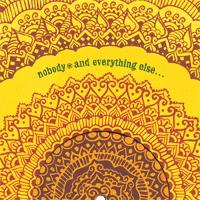 And Everything Else rises beyond being bland audio scenery, butnot enough to be great. After a string of respectable and, by thestandards of the industry, reasonably successful records, Nobody (knownto his mom as Elvin Estela) has kept mum regarding the reasons for hisswitch from beat-heavy hip-hoppin' Ubiquity to the less funky, moreelectronic Plug Research.
And Everything Else rises beyond being bland audio scenery, butnot enough to be great. After a string of respectable and, by thestandards of the industry, reasonably successful records, Nobody (knownto his mom as Elvin Estela) has kept mum regarding the reasons for hisswitch from beat-heavy hip-hoppin' Ubiquity to the less funky, moreelectronic Plug Research. Plug Research
And Everything Else more or less picks up where Pacific Drift: Western WaterMusic Vol. 1left off, with Estela proffering a set of twelve genre-bending,head-shop friendly collages. Right away Nobody distances himself fromlabelmates like AmmonContact and Daedalus: building off of psych-rockand acid records, he uses guitar and drum samples to fuel his musicrather than the more usual funk, jazz or blips and beeps, and even putstogether a interpretation of the Flaming Lips joint "What is theLight." Despite Nobody's hip-hop background and the reliance on beatstructures for his songs, rapping is noticeably scarce. There are somerhymes laid down in Spanish on "Jose De La Rues!!", but most of thevocalization come from the same psychedelic source material, with thenotable exception of a soft and easy guest spot from Mia Doi Todd.Nobody clearly has a more than just a "thing" for rock music and inparticular the perception-altering set, but he gets down and dirty withthe whole crate, and that sonic variance is And Everything Else'sgreatest asset. On "Wake Up and Smell the Millennium" he cuts andslices an electric harpsichord mixed in with some guitar riffs; on"Tori Oshi" (jointly crafted with Prefuse 73) he juggles some Easterninstrumentation with a Mingus-like free-jazz bassline, reverse-soundingorgans and other classic psychedelic sonic residue not unlike what'sfound on "Revolution #9." He may be unique from his label friends andmusical bedfellows, but Nobody lets And Everything Else fallinto the same trap—like so many records of this nature, you wonder atthe record's purpose/meaning. It's more Rothko than Norman Rockwell,but like Rothko, most people won't be able to understand what wasbehind it. After a few listens, it's not certain what Nobody's musewas. That nugget of uncertainty keeps it from being truly memorable.Undeniably eclectic, sometimes trippy, at others mesmerizing, it'smostly just agreeable.
samples:
Read More
- Lucas Schleicher
- Albums and Singles
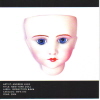 The liner notes read, "This recording is numerologically accurate andanagrammatically active." It's a journey from the recesses of the humanmind to the world of words and sounds; Andrew Liles has resurrected hislove for the anagram and created two discs of inverted uneasinesspractically bathing in the dread and fear of every human psyche.
The liner notes read, "This recording is numerologically accurate andanagrammatically active." It's a journey from the recesses of the humanmind to the world of words and sounds; Andrew Liles has resurrected hislove for the anagram and created two discs of inverted uneasinesspractically bathing in the dread and fear of every human psyche. Infraction
If amodel were to look into the mirror and see past all the make-up andfake admiration, he or she might see their face arranged into somethingdreadful, like the sounds Liles swoops up and twists into shimmeringstrands of crawling self-doubt. Beginning with a "Journey" and endingit in the same (but massively rethought) place, Liles deconstructs analready geographic puzzle of locations and ideas in order to reveal theparodies inherent within communication, thoughts, and recordings.Voices pan, distort, and stretch to their limits, connecting theseemingly empty space between aural recognition and the dead maze ofconcentrated mass that floats through the soul of the drone. New York Dollhas been around for awhile, now, and as much as I love Liles' work,I've been absolutely afraid of this piece. All the loose ends andcontradictory paths lurching beneath the electric activity of the mindare pieced and sewn together on this record. The entire album reeks ofa discomfort that places my head in a discrete and incrediblyuncomfortable position, much like viewing the whole of an enigma, whichsimultaneously does and does not make sense. I've found myselflistening to this record more out of curiosity than out of enjoymentand, with but the second disc excluded, much of what Liles has done onthis full-length feels more like a puzzle than a record. The notes onthe sleeve, the titles of the songs, the hauntingly robotic words, andthe general ghastliness all add up to a kind of riddle, beseeching meto move around inside of the album and find its bones, discover itsDNA, and finally unravel it in a self-destructive fit. The album pansbetween consistent tones, clicks, static, and eerie atmospherescomposed of pianos, telephones, and urban pandemonium. Never confidentthan any one approach will exact the necessity of his paranoia, Lilesfills this album up with all the conspiracy and awkward connection ofthe most damning philosophical theories. After finishing the record itis impossible to deny that everything is connected by necessity, a limbof some central organism throbbing and decaying, pulsing through everyheartbeat and uttered word in human and animal history. There issomething waiting in the spaces between this album and its the mostunnerving portrait of the soul he's yet to conceive. Even asrecognizable voices fill the stereo spectrum on the second disc, Lilesis laughing at the opinion that it must be terrestrial, of this world, and not some product of the mind extracting itself from nothing.
samples:
Read More
- Matthew Jeanes
- Albums and Singles
 It's hard to make a good genre record. The emphasis there is on "good" because it's easy as hell to follow a formula of expected tricks and gags and come out with yet another regurgitation of a genre. Like in the film world, the trick to making a genre record that stands out on its own as a pillar of the genre is an artist behind the work that is willing to jump in head first with a love of the material and an acceptance of the genre's successes and its detritus.
It's hard to make a good genre record. The emphasis there is on "good" because it's easy as hell to follow a formula of expected tricks and gags and come out with yet another regurgitation of a genre. Like in the film world, the trick to making a genre record that stands out on its own as a pillar of the genre is an artist behind the work that is willing to jump in head first with a love of the material and an acceptance of the genre's successes and its detritus. Zhark International
Abelcain has turned in such a record—a measuring stick of sorts for thematic breakcore. Pantheon of Fiends, from its lavishly printed sleeve to its two thick plates of blistering beats and uneasy strings, is the ultimate love letter to classic horror films via breakbeats and distorted bass. The spooky sounds and zombie samples have been tried before in this small corner of the world, and the pairing of blood-splattered imagery with hard, asymetic drum breaks is itself an archetype in the world of breakcore and hard drum n bass. All that makes Abelcain's success here that much more impressive, because he's synthesized the beats chopped like bodies and the ominous piano loops more completely than anyone before. The samples aren't just recognizable, they are intentional references to the most iconic horror films of all time and they serve to tie the scattershot rhythms to a theme. In fact, Fiends begs the question, "why hasn't anyone scored a horror film with music like this before?" With rhythms that imitate insects surrying and skeletons marching up stairs in a dank castle, this record would be the perfect way to bring Hollywood's fascination with remaking horror classics into the new millenium. While so many of Abelcain's peers are off on an experiment to further molest the amen break with layers of distortion and monotonous bass pounding, Fiends finds success in a different formula. Cleaning up the beats, allows their razorblade cuts and sutures to bounce giddily off of atonal pianos and theremin samples. Focusing on the precise composition of well-known sounds rather than the quest to produce squelches and skree heretofore unexplored makes the record feel as classic as the references is swipes. In the end, like the best horror movies, Pantheon of Fiends takes the familiar and makes it creepy, brooding, and at the same time fun. People don't go to horror movies to be scared for the sake of being truly afraid; they go to be scared as entertainment, and Pantheon of Fiends is above all else, entertaining.
Read More
- Administrator
- Albums and Singles
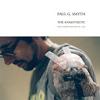 Recorded live in Dublin, The Anaestheticis composed of seven tracks of piano improvisations. The performancewas recorded in a small building dating from the early 18th century andas such, there is no sound-proofing so at certain points in therecording there are sirens heard from the fire station across thestreet and other city noises.
Recorded live in Dublin, The Anaestheticis composed of seven tracks of piano improvisations. The performancewas recorded in a small building dating from the early 18th century andas such, there is no sound-proofing so at certain points in therecording there are sirens heard from the fire station across thestreet and other city noises.Deserted Village
Also captured are the noises from Smyth'suse of the piano's pedals: a dull thudding that is especially prevalenton the opening track. Both these and the odd stifled cough from theaudience combined with Smyth's style of playing produce a mood that issomewhere between classic noir and H.P. Lovecraft. The applauseand friendly chatter from Smyth have been edited out of the recordingmeaning that any sort of jubilant feeling is gone. The Anaestheticcould very easily become an exercise in alienating the listener butSmyth keeps it human sounding and does not stray too far into academicwank. "II" begins is over eleven minutes of energetic bursts of tight,complex progressions that sound like madness and indeed the thumping ofthe pedals are like Poe's Tell-Tale Heart. The next piece, "III," ismuch more restrained but equally sinister sounding. The sirens come inalmost on cue to add to the atmosphere. Smyth is not content to justsit at the keys and play away, he strums and scrapes the strings duringthe performance with one hand and plays the keys with the other. Hemutes the strings he plays with his fingers which gives veryinteresting textures to the notes. Whilst the first two tracks are abit too plinky and random for my particular taste, The Anaestheticis a great album. As the album plays through and Smyth became morecomfortable with what he was doing the music gets better with eachtrack. I remember leaving the performance on that night feeling drainedbut delighted with what I had heard and the recording does Smyth'sperformance justice.
samples:
Read More
- Administrator
- Albums and Singles
 Stereo Total's latest album (available in three versions from threecountries: Germay, France and the USA) is a bit of a disappointment.
Stereo Total's latest album (available in three versions from threecountries: Germay, France and the USA) is a bit of a disappointment. Disko B
Some songs like "Ne m'appelle pas ta Biche" show Stereo Total at theirbest: cheap drum machines, cheaper synths and great lyrics. Other songsdon't quite seem to work well on the album. The title track "Do theBambi" is less than impressive, as it sounds overworked and contrived.This is a far cry from the Stereo Total of old who could be bestdescribed as sloppy in an elegant way. Thankfully the lyrics are stillwonderfully bizarre. "Cinémania" is essentially a list of classicheroes and heroines of cinema and "J'ai Faim!" is a love song mixedwith a list of fine foods. Despite the wide range of subject matter ofthe lyrics all the songs seem to blend together. If the album was aboutfive songs shorter it would probably flow a lot better but as it standsDo the Bambiseems a little bloated. Its main problem is that some of the songs arewritten for specific soundtracks (a theatrical version of the story ofChristiane F. and a movie by Jean-Luc Godard). They tend to be theweakest on the album but perhaps they work better in their originalcontext. The exception out of these commissioned works is "Tas de Tole"which sounds like a sixties R'n'B version of Kraftwerk's "Autobahn" (itsounds great). The album finishes with a cover of "Chelsea Girls" whichI prefer to the original by Nico purely because Stereo Total's versionis free of horrible sounding flutes. Do the Bambi is a mixed bunch of songs, not the best Stereo Total album but it's not a disaster by any means.
samples:
Read More
- Jonathan Dean
- Albums and Singles
 I thought I'd right a wrong here by reviewing Marissa Nadler's debutalbum, which I completely overlooked upon its release last year. Ballads of Living and Dying is unmistakably the same voice and sensibility as that on Mayflower May, but without the conceptual trappings, there are a greater variety of approaches to be found on the record.
I thought I'd right a wrong here by reviewing Marissa Nadler's debutalbum, which I completely overlooked upon its release last year. Ballads of Living and Dying is unmistakably the same voice and sensibility as that on Mayflower May, but without the conceptual trappings, there are a greater variety of approaches to be found on the record.Eclipse
The songs on Marissa's debut makegreater use of studio effects, with liberal vocal processing and amyriad of electric guitar effects, including an e-bow which is used tohaunting effect on several of the album's best tracks. On the whole,this album is darker and more psychedelic than Mayflower May,which I suspect might have greater appeal to listeners approaching thismaterial from the standpoint of classic 1960s psych folk like TheTrees, Fairport Convention and Mellow Candle. Nadler's vocals on thisalbum seem even a bit more dramatic and affected than on her sophomorerelease, especially when she tackles a pair of tracks adapted fromother writers' works, using her voice cannily to reshape the words inorder to fit her familiar melodic, cyclical fingerstyle. "Hay TantosMuertos" utilizes words by Chilean poet Pablo Neruda, and the album'sfinal track adapts Edgar Allan Poe's famously lyrical death ballad"Annabelle Lee" into a chilling slice of haunted psychedelia with anatmosphere inexplicably resembling Dark Side of the Moon-eraFloyd. Nadler's spooky evocation of Civil War-era balladry is inevidence on the track "Box of Cedar," where a soon-to-be war widowbemoans and celebrates her husband's certain fate: "I'm gonna telleverybody I know that I'm glad to see you/You know you're coming homein a box of cedar." Populating the album are a similar cast ofcharacters from the second album, including Mayflower May herself, thelonely ghost of a spoilt and slain maiden who wanders the woods"Without a lover/Without a friend/Without a savior," Nadler sadlyimploring: "And if you see her/Call out her name/And if you hearher/Out in the rain/Mayflower May Belle was her name." The addition onseveral tracks of auxiliary instrumentation including banjo, accordionand organ contributes to a slightly more eclectic sound that stands incontrast to Mayflower May's limited palette. As with the secondalbum, after repeat listens, the strongest aspects are once again thedeceptive simplicity of the songs and the strength of Marissa'sseductively haunting vocals. I could well imagine eventually growingtired of the rather trite stylistic conceit of Marissa Nadler's morbidpsych-folk, but I don't think I'd ever tire of hearing her voice. Infact, I would probably be happy listening to her recite the phone book.
samples:
Read More

